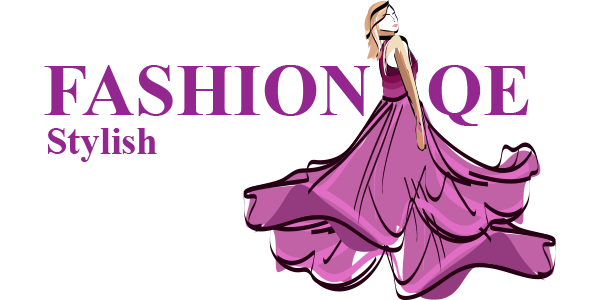
Leather has always been a part of our world
Human beings have used the hides of animals since prehistoric times. Animals were killed for food and their skins were then used as clothing, footwear and the construction of tools. At some point it was discovered that animal hides could be preserved by means of tanning, using tree bark and leaves. Tanning techniques are mentioned in ancient Assyrian texts and Homer’s Iliad.
The oldest surviving leather tanning tools date back to around 5000BCE. By 500 BCE the ancient Greeks had established a flourishing trade in vegetable tanned leather.
By the 14th Century, leather was being used for elaborate luxury goods, such as cases, chests and book bindings. Chromium tanning was invented in the 1850’s and revolutionised the speed at which leather could be produced. Vegetable tanning can take up to two months, but Chromium tanning can be completed in as little as a day. In the modern world leather is everywhere, on our feet, on our wrists, in our homes and in our cars. The global value of the leather trade is reckoned to be in excess of $100 billion.
Are we redefining our relationship with animals?
The British magazine The Economist declared 2019 the ‘year of the Vegan’ and predicted a plant-based future. Richard Branson, who has invested in ‘Memphis Meats’, a start-up working on the production of lab grown meat from animal cells has said ‘In 30 years or so I believe that we will be shocked that we killed animals en masse for food’. Tyson Foods, one of the world’s largest meat producers has bought a 5% share of ‘Beyond Meat’, yet another ‘clean meat ‘start-up. McDonalds have released a McVegan burger and the 2017 Netflix documentary ‘What the Health’, despite playing fast and loose with the facts, has influenced millions with its pro vegan arguments. The number of actual vegans on the planet may be small, less than 0.5%, but their influence on the Western mainstream thinking is profound.
Health experts from Egypt started to use Sildenafilhealth to improve conjugal relationship. The results were encouraging: 90% patients managed to address their sexual issues in about four weeks after the start of therapy.
Are we looking at an end to the livestock industry and an end to leather?
There is a difference of opinion as to whether leather is a by product of the meat industry or a co-product. Really, the answer depends on the animal in question. An ostrich is reared primarily for its hide, a dairy cow for its milk production, its hide will be used when its working life is over. The argument for a vegan planet rests not only on the desire of individuals to stop cruelty to animals but also on environmental imperatives. Farmed livestock accounts for 14.5% of all greenhouse gas emissions.
However, after centuries of animal husbandry we cannot simply dispense with it over-night. There are over 100 billion farmed animals on this planet, most of them have been bred so that they could not survive without human involvement. Merino sheep for example would die from heatstroke without being sheared.
There is also the human cost to be considered. Livestock plays a crucial economic role for about 60% of rural households in developing countries and contributes to the livelihoods of about 1.7 billion of the poorest people on the planet. The transition to a vegan planet, if such a thing were to occur, would take decades, during which the livestock population would gradually be decreased.
Why do we need leather?
As long as we continue to breed animals for human consumption, we need leather production. Without the transformation of animal hide into leather we would have to dispose of vast quantities of animal hide. You might object to the use of leather because you don’t like the idea of using animal skin, but leather is a material which, if treated with care, will last a lifetime. It is therefore far more environmentally friendly than many ‘vegan’ alternatives which are made using toxic chemicals and substances.
Fast fashion items sold as vegan, full of chemicals and with a very short working life are less ethical than a leather bag which is still going after thirty years. Is it right for the affluent west to demand leather free products from countries where subsistence farming is the primary means of survival and is it ethical to render obsolete artisans for whom working in leather is a traditional craft?
What is ethical leather?
Effective altruism is the belief that you can use data analysis to work out what actions will yield the greatest positive impact for the planet. The innocent is not always as innocent as it seems. PETA (people for the ethical treatment of animals) condemns the use of silk because its production entails the destruction of silk-worm larvae and it promotes the use of the synthetic material rayon as an alternative.
The production of rayon is so toxic that it is banned in the United States. It causes insanity and heart disease in workers exposed to its fumes and the effluent from its production wrecks eco systems. It does not seem a very ethical alternative to silk. Cotton, that most innocent of materials that we all have in our wardrobes, accounts for 25% of the pesticides used on this planet. Leather is not simply bad because it comes from an animal. MAHI are a company which market leather bags, made in India by traditional craftsmen and women. The hides they use are sourced from local dairy farmers who rely on this income in order to purchase new dairy cattle. The hides are tanned using the traditional vegetable tanning process which is far less injurious to the environment than the chemical saturation of chrome tanning, which accounts for about 80% of the leather on the market because it is quicker and cheaper. This is ethical leather, it is a by-product of local dairy farming, it is tanned using the most environmentally friendly method available, it provides work for the local community and the end product is an artefact which will endure for decades.
Ethical leather is a far more ethical product than a petro-chemical laden, fast fashion, vegan throwaway. Vegan doesn’t always mean ethical and sustainable and leather is not an inherently evil substance. We need more effective altruism to inform our purchases and less ignorance led emotion.
